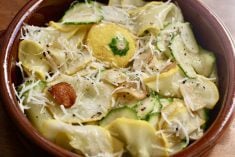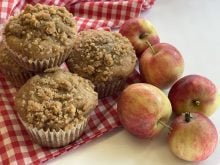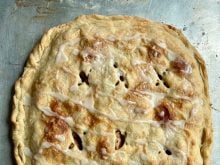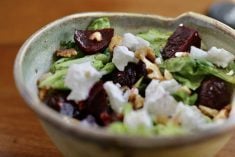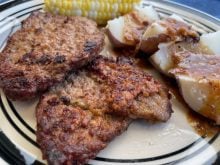Cabbage rolls and pierogies were traditionally enjoyed in many European countries, specifically Germany, Poland, Ukraine, Russia and the Mennonite culture group, who lived historically in most of these countries. Because of their rich cultural background these recipes have many variations and names. Today these dishes have become part of the Canadian Prairie food culture.
In 2006, Naden Hewko, from Macklin, Sask., shared this Ukrainian meatless cabbage roll recipe with me. These rolls were traditionally served in her family as part of the 12 dishes eaten on Christmas Eve. Naden’s mother would also serve cabbage rolls as a company dish. Now they are on the menu at every family celebration, Christmas, Easter or a wedding.
Meatless Ukrainian Cabbage Rolls or Holubtsi
Read Also

Alberta cracks down on trucking industry
Alberta transportation industry receives numerous sanctions and suspensions after crackdown investigation resulting from numerous bridge strikes and concerned calls and letters from concerned citizens
Makes about 50 small dainty cabbage rolls.
- 3 c. rice 750 mL
- 6 c. water 1.5 L
- 1 tsp. salt 5 mL
- 1 large onion, finely chopped
- 1/2 c. oil 125 mL
- 1 -2 heads of cabbage*
- 1 – 10 oz. tomato soup 284 mL
- 1 – 10 oz. can water 284 mL
- 1/2 c. canola oil 125 mL
- 1 c. tomato juice 250 mL
*Naden’s mother used soured cabbage leaves. Naden and her sister Olga adapted the recipe to use very lightly steamed fresh cabbage leaves. Select a loose, but well-formed head of cabbage with leaves that come apart easily and is light in colour.
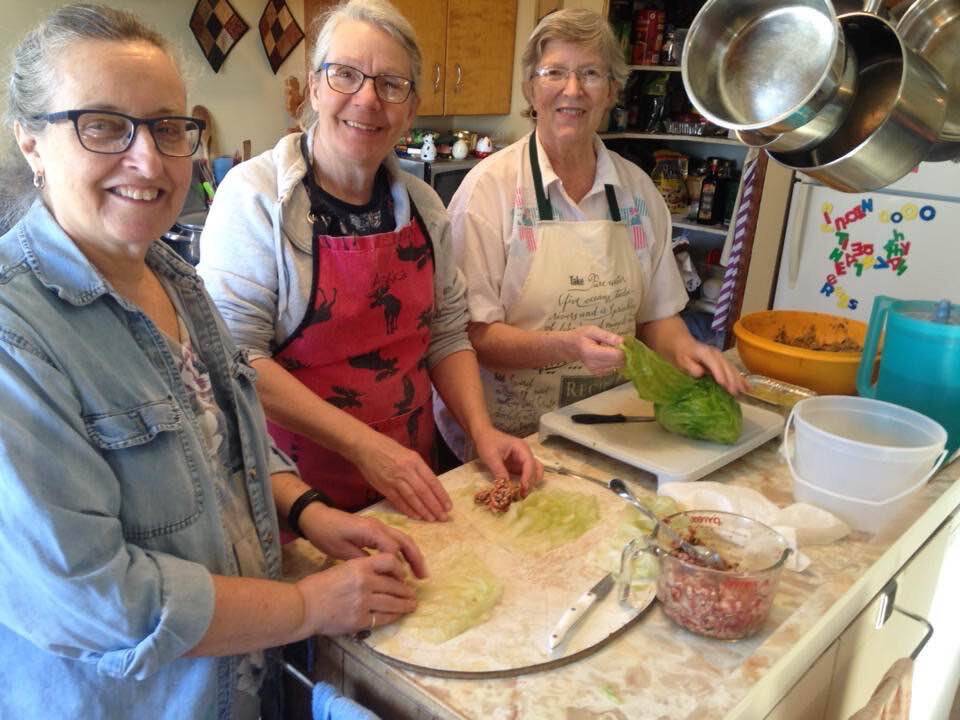
Cut out the cabbage core and place cabbage head in a large container of very hot water until leaves are pliable. Drain water and carefully take the leaves apart. Cut out large centre ribs from each leaf. If leaves are very large, cut into three to four pieces. Drain leaves well before filling.
If using purchased sour cabbage, pour boiling water over cabbage leaves after taking them apart. Drain well and cut out the hard centre rib before filling. The sour cabbage rolls take longer to bake so adjust time accordingly.
Cook rice in water with salt, follow instructions on package and cook until slightly underdone.
Sauté onion in oil, add to rice and salt and pepper to taste.
Let cool slightly before filling cabbage leaves.
Place a spoonful of rice on about a four or five-inch (10 to 13 cm) long piece of leaf. Roll tightly, tucking in the ends while rolling. Continue rolling rice in leaves until all rice is used. Place beside each other in a greased roaster or casserole that will hold 50 rolls. Only have rolls two layers deep. Another option is to place cabbage rolls on a cookie sheet and freeze for baking later.
Naden’s mother lined her roaster with cabbage leaves before adding the cabbage rolls to keep them from scorching.
To bake mix tomato soup, water, oil and tomato juice. Pour sauce over cabbage rolls; cover container and bake in 400F (200C) oven for 15 minutes or until sauce is bubbly. Turn oven down to 325F (160C) and bake for about two hours or until cabbage is tender to touch with a fork. Check halfway through baking to see if more tomato juice is needed. The rolls should not be too soggy, nor should they dry out. The secret is in the slow cooking once the sauce bubbles.
Recipe adapted from Naden Hewko’s cookbook “Secrets from the Ukrainian Baba’s Kitchen,” printed 2014.
Other traditions use a meat and rice filling in the cabbage rolls. The following recipe is adapted from the “Mennonite Girls Can Cook” cookbook, printed 2011. The meat cabbage rolls are usually made larger using the whole cabbage leaf per roll.
Holubschi (Cabbage Rolls)
- 1 large savoy cabbage *
- 2 lbs. lean ground beef, or half ground beef and half ground pork 1 kg
- 2 medium to large onions
- 2 tbsp. canola or olive oil or butter 30 mL
- 2 c. cooked white or brown rice 500 mL
- 3 eggs
- 1 1/2 tsp. salt 7 mL
- 1 tsp. pepper 5 mL
- 2 – 10 oz. cans tomato soup 284 mL
- 1 – 19 oz. can tomato juice 540 mL
- 1 – 10 oz. can chicken broth 284 mL
*Savoy cabbage has a loose full head of crinkled leaves that are easy to remove. A day before making the cabbage rolls place head of cabbage in a plastic bag and freeze for 12 hours or overnight, remove and thaw at room temperature for several hours. The leaves will be soft and easy to use without having to boil them.
Cook rice the day ahead and refrigerate overnight.
Chop onions fine and sauté slowly until golden brown. Set aside to cool.
In a large bowl, break apart the ground meat, add sauteed onions, rice, eggs, salt and pepper, with hands mix together until combined.
Remove leaves from cabbage, cutting away tough part closest to core.
Spray a large casserole or two small casserole dishes with cooking spray.
Put about a 1/3 to 1/2 cup meat mixture at the bottom of the leaf and roll up, the meat amount varies depending on size of leaf, repeat until all the meat is used.
In a large mixing bowl, combine tomato soup, juice and broth pour evenly over cabbage rolls. Cover with foil or lid.
Bake slowly at 325F (160C) for two hours then serve.
Or remove foil and cool on counter. (If you don’t remove foil there will be little bits of foil on the cabbage rolls wherever the foil touches.) Cover with plastic wrap and either refrigerate or freeze.
For reheating, thaw first if frozen, remove plastic wrap and cover with a lid or foil, place in 325F (160C) oven for about an hour or reheat in microwave on sensor reheat.
Pierogi
Pierogi, pronounced ‘puh-row-gee’, can also be spelled pierogie, perogie, pyrohy or perogy. They are also known as varenyky and wareneki. There may be other spelling variations and names for the simple dough pockets that can be filled with potatoes, cottage cheese, sauerkraut or fruit.
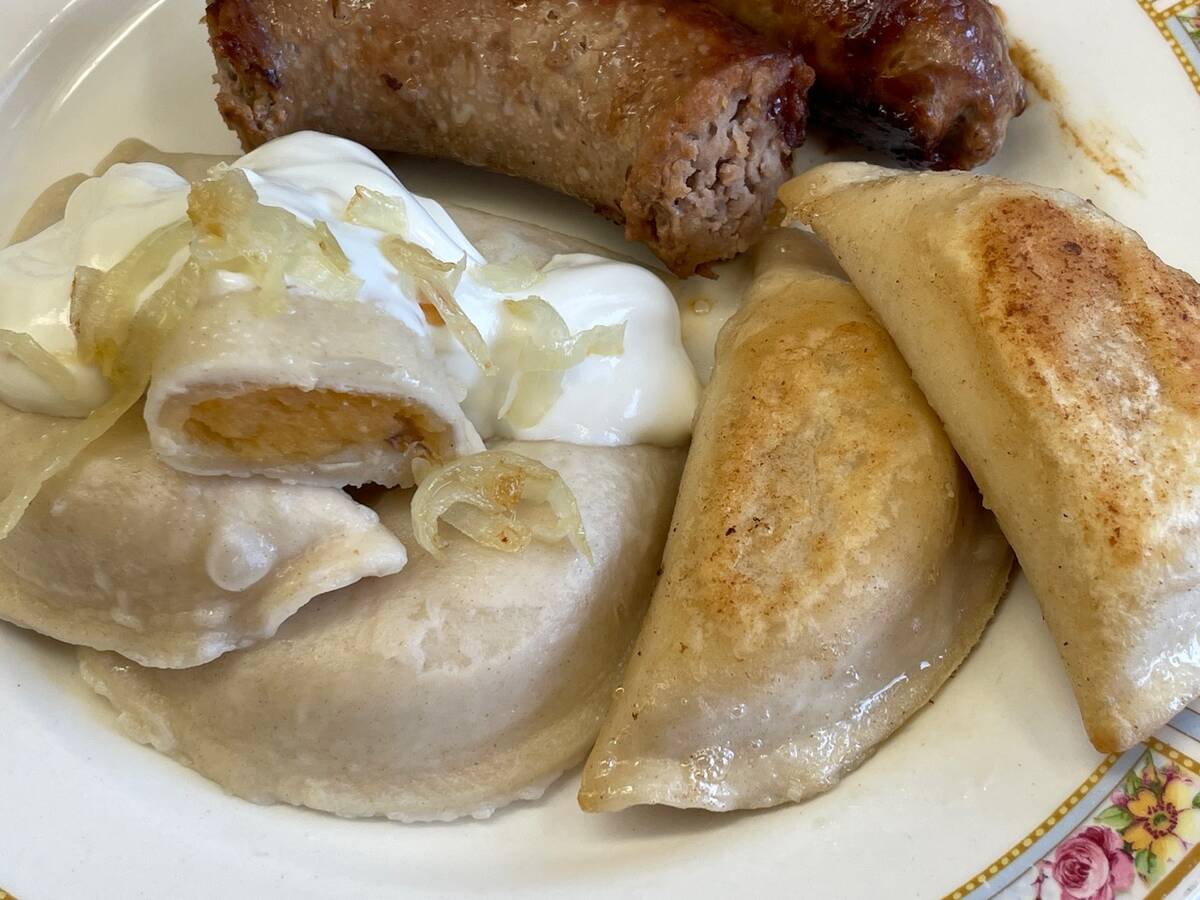
There are also variations on the ingredients for the dough from as simple as flour, water, salt and oil to others that add eggs, baking powder and sour cream to the mixture. The fillings also vary from dry curd cottage cheese to combinations of potatoes, onions, bacon and cheddar cheese to sauerkraut alone or with meat fillings. Dessert pierogies are made with fruit fillings of plum, saskatoon berries, raspberries or rhubarb.
Potato Cheddar Cheese Pierogies
Basic Pierogi Dough:
This makes about 65 pierogies.
- 6 c. all-purpose flour 1.5 L
- 2 tsp. salt 10 mL
- 2 c. cold water, divided 500 mL
- 2 large eggs beaten
- 6 tbsp. canola oil 90 mL
Filling:
- 4 lb. baking potatoes, such as Russet 2 kg
- 1 medium white onion finely diced
- 1/3 c. salted butter softened, divided
- 4 1/2 c. shredded cheddar cheese 1.125 mL
- salt to taste
- white pepper or very fine black pepper to taste
- optionally, cooked crumbled bacon could be added to the filling
For Serving:
- 1 onion diced or thinly sliced
- 2 tbsp. salted butter or as needed for frying
- sour cream, optional
Dough:
In large bowl add flour and salt, mix to combine, add beaten eggs, oil and 1 1/2 cups of water. Mix well to form a dough, adding more water if needed.
Knead dough on a flat surface for about four to five minutes or until smooth and pliable. Dough can be made in a mixer with a dough hook, but don’t overwork the dough.
Cover dough with plastic wrap and let it rest at room temperature for 30 to 60 minutes.
Filling:
Peel potatoes and cut into two-inch cubes. Boil in salted water for 15 minutes or until fork tender.
Cook onions in 2 tablespoons butter in a skillet over medium-low heat, until tender without browning.
Once potatoes are cooked, drain and mash until smooth, add onions, cheese, remaining butter and salt and pepper. Continue mashing until the potatoes become very smooth. Taste and adjust seasoning.
Assembly:
Using half the dough, roll out 1/8-inch thick. Using a three-inch biscuit cutter cut circles.
Scoop 1 1/2 tablespoons of filling and roll into a ball, place on pierogi dough. Fold dough over to form a semi-circle, pinch edges to seal and to thin the edges. Place on a baking sheet. Repeat.
The pierogies can be cooked or frozen at this point.
To Cook:
Cook diced onions and 3 tablespoons butter in a large skillet on medium-low heat until tender. Set aside.
Gently add pierogies to a large pot of salted boiling water, cook until they float, about two to four minutes. Remove with a slotted spoon. Place in a bowl with butter and top with onions.
Optionally pierogies can be placed in a hot skillet with butter and cook until browned on each side, about five minutes.
Serve warm with onions and sour cream.
To freeze place pierogies on a parchment-covered baking sheet in a single layer and freeze. Once frozen, transfer to a plastic bag and label, use within three months.
To prepare boil frozen four to six minutes.
Recipe adapted from www.spendwithpennies.com
Fruit Pierogies
- fresh plums, cut in half
- fresh raspberries or saskatoons
- sugar
On a circle of dough place half a plum or a small spoonful of berries, sprinkle with sugar and seal edges. Cook fresh or frozen.
Place in a pot of boiling salted water with a tablespoon of butter. Cook until the pierogies float. Remove with a slotted spoon and place in a bowl with melted butter, toss to coat, add a few fresh plums or berries and a sprinkle of sugar.
Betty Ann Deobald is a home economist from Rosetown, Sask., and a member of Team Resources. Contact: team@producer.com.




